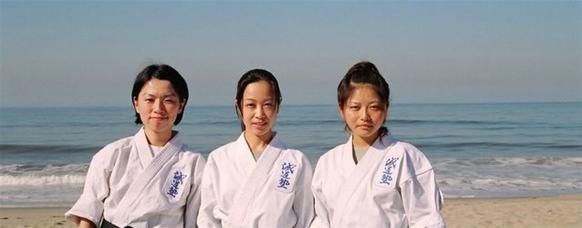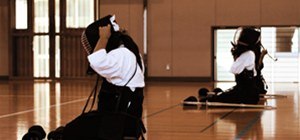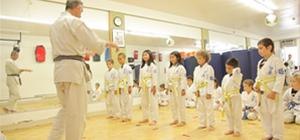
Beauty and The Beast
The Japanese word yugen connotes the sense of subtlety as it relates to beauty. According to Donn Draeger, author of many books and articles on the history of Budo, the definition of yugen includes such ideas as "suggestiveness," "charm," and "dynamic stillness." Draeger writes that "the essence of yugen lies in beauty and gentleness, the tranquility and elegance of a performance executed in a serene manner. Yet it is not enough to witness and learn about yugen from others," Draeger observes. "Yugen is thoroughly understood only through one's own sustained efforts."
What do beauty and gentleness have to do with karate-do?.
Entering the Seido dojo, the trainee enters the realm of budo first and foremost. Technical development and the use of aggression are addressed, of course, but the primary mission of Seido is the trainee's personal development. Strength, flexibility, power and coordination are all highly valued physical attributes but if they are put in the service of brute force, domination and fear they fall short of moving the soul and the spirit to its fullest expression. How then, does the trainee minimize the presence of fear and the impulse to impose force while training, at the same time, to maximize physical powers and the very ability to impose force? Two answers to the question of beauty and the beast come to mind.
The first is the "exercise" of courtesy, rei in Japanese. Demonstrating courtesy may be as demanding a practice as any physical regimen found in the dojo. It is certainly a pervasive component of Seido and demands the trainees attention. Through attention to courtesy, the trainee is able to enter into a fuller communion with others. Courtesy requires interaction with another or with others. Through the power of affiliation, nurtured by simple courtesies and acknowledgements within the dojo, the spirit is charmed. This is one reason why traditional formality is emphasized in a Seido dojo. Such formality, done with a humble attitude absent the fussiness of Emily Post, charms the spirit and elevates it at the same time. It encourages a gentleness.
The second "exercise" is kata and, more specifically the kamae, or presentation. Kata is often the source of much consternation for the trainee. The movements of the kata seem strange and ineffectual at first and there is a lack of appreciation for why these "things," the kata themselves, need to be learned. Adding to this stress is the fact that the trainee's performance of kata is constantly being judged by the instructor. The trainee is always aware of the instructor's watchful eye in the dojo. There is a reason for such watchfulness. The instructor is attending to the trainee's state of mind as expressed through their movements and the intervals between the movements, the kamae. Many newcomers to a traditional dojo are slow to see the interplay between movement and stillness. Their first goal is to learn how to move adroitly, and well it should be. Yet as the trainee progresses he or she comes to understand that the kamae (sometimes referred to as stances or "dachi") have as much, if not more, value with respect to their inner development . The ability to maintain equanimity in the face of challenges is widely perceived as the hallmark of self-mastery. Circumstances should not be allowed to gain such a grip on the mind and emotions of the trainee that it disturbs their sense of composure. Of course, this is easier said than done. Kata practice, with its periods of intense action and seeming stillness flowing one into the other, is the perfect occasion for the trainee to experience the meaning of "yugen." The process is an internal one. Yet after much practice the inner equanmity within the violent action seeps out to the surface and is visible to the instructor, if not to everyone else in the class. Dynamic stillness, indeed, becomes apparent.
Sustained effort is the path to all accomplishments. Equanimity is the flower of your effort. Gambatte kudasai! See you in the dojo.
Just updated your iPhone? You'll find new emoji, enhanced security, podcast transcripts, Apple Cash virtual numbers, and other useful features. There are even new additions hidden within Safari. Find out what's new and changed on your iPhone with the iOS 17.4 update.




























Be the First to Comment
Share Your Thoughts